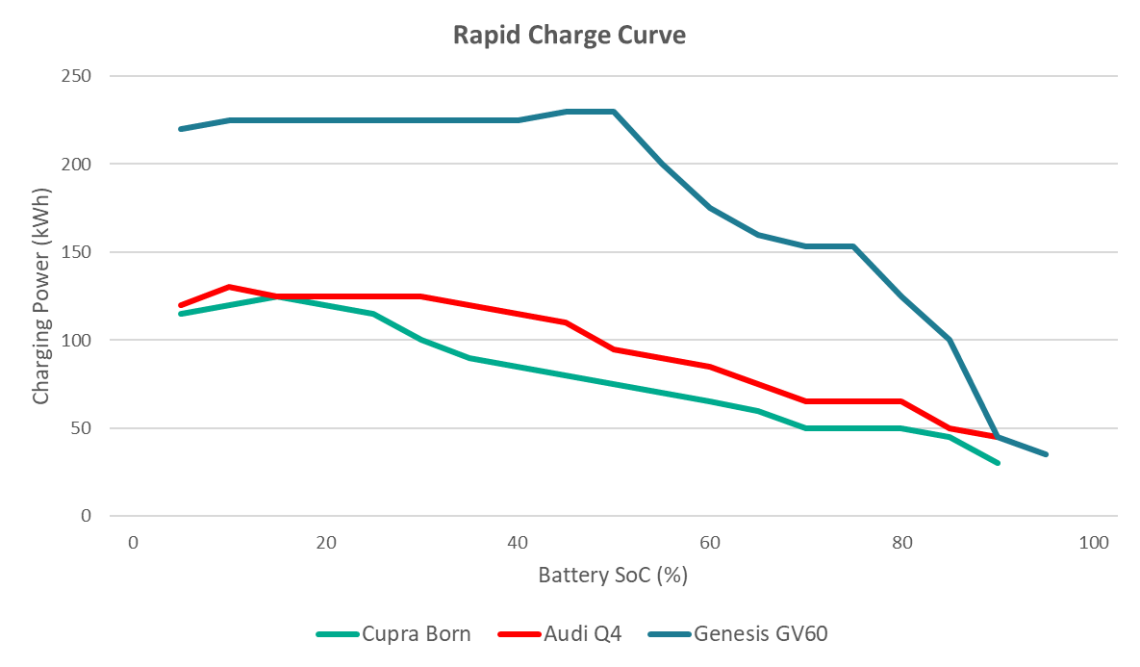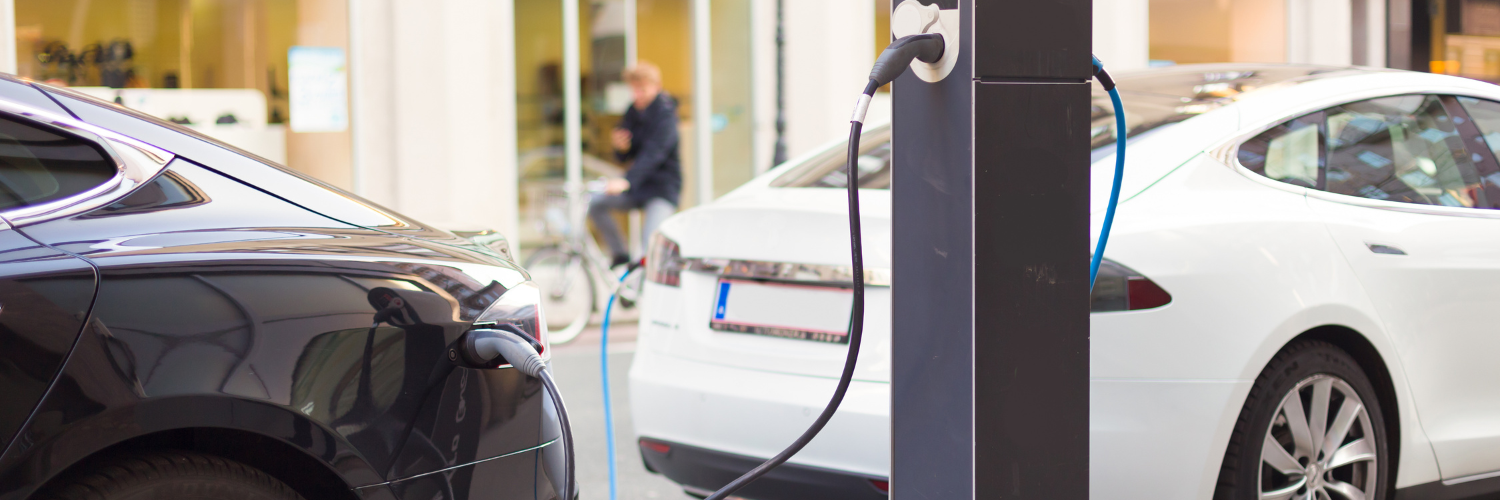Making sure your first fully-electric car will work for you may be slightly daunting, but it needn’t be. Knowing a few key points will provide the confidence to work out if an electric car will fit into your life and which electric car is best for you.
To answer the ‘if’ question, you’ll need to keep a few points front of mind about how you currently use a car.
-
1. Where to charge your EV
This is probably by far the biggest consideration that you will have to make. For an easy transition from a petrol or diesel car to an electric vehicle (EV), having access to off-street parking and the ability to install a charging point is high on the list. However, if you don’t have access to home charging or off-street parking, there are other options to make an EV work for you and your needs.
Many EV drivers get around this by looking for charging solutions for when their car is stopped the longest, so workplace or kerbside charging in residential areas work well.
If workplace or kerbside charging aren’t an option, there may be rapid charge locations nearby that suit your regular journeys.
-
2. EV home charging
There are many charging point options out on the market, such as through our partner British Gas with Hive EV Charging. The ability to schedule charging time so that you can maximise the benefit of an EV tariff from your energy supplier is an added bonus.
Do you have solar panels or the ability to install them? If so, some chargers can route the electric from the system to your car, helping to reduce your cost per mile.
-
3. Public EV charge points
The majority of fast-charging locations now work on a tap-to-pay basis, making card or smart device payments simple and removing the need to register for a dedicated app – even if doing so can result in lower costs.
With the current average range of EVs on the market being over 200 miles, public charging may not even need to factor into your choice. However, if you do have to undertake longer journeys that may go beyond the range of your electric car, whether for business or personal reasons, more route planning will be required and you may need to change where you stop for a break.
While navigation systems like Google Maps will list charge points and help with options when needed, apps and websites, such as Zap-Map, offer a very comprehensive charge point listing with maps and charge point details, real-time information and the ability to tailor your journey to a specific car. You can also filter charge points by type (connector, network provider, etc.), location and charge speed, which is extremely useful when you need a quick charge en route.
Public charging infrastructure is constantly growing and improving, with a rise in hubs offering multiple charging bays. Just ensure that you plan your journey carefully.
The most important factor to remember is that public charging is similar to motorway fuelling for a petrol or diesel vehicle. Ideally, you’d only charge up enough to complete your journey - often a 20-minute stop is more than enough.
-
4. EV charging times
An additional factor to consider that’s very useful when selecting an electric car is the maximum speed at which the car can charge.
This number is given in kW and is typically between 100kW and 350kW. The higher the number, the quicker the vehicle can take energy on board.
Although a vehicle may state that it has a high charge rate, its ability to take that charge is based on many factors.
Firstly, the state of charge (SoC). A battery that’s running low will have the ability to charge quicker than one that’s three quarters full. Other factors such as ambient temperature, number of vehicles charging and car battery temperature can also affect charging rates.
Just like when you charge your mobile phone, if you put it on charge when the battery is low, it charges really quickly and you will often have enough charge within a few minutes, however a full charge will take longer to complete.
The graph below gives an example of the charging curve of a small selection of popular EVs on fleet. Notably, any charging when the vehicle is over 80% SoC is much slower than charging at 20%.

-
5. EV range
Range will of course also be a factor. How far do you need to travel between charges? Statistics show that the average journey is around 100 miles and the average range of EVs is currently just over 200 miles.
Just like the miles per gallon (MPG) on a petrol or diesel car, don’t rely completely on the official Worldwide Harmonised Light Vehicle Test Procedure (WLTP) range figures published by car manufacturers. Because these are calculated in lab conditions, they tend to be higher than the real-world range. An excellent source of independent real-world range figures can be found at www.ev-database.org, as well as some well-known car review websites, such as www.autocar.co.uk.
Remember too, that just like your petrol and diesel car, range will vary according to temperature and a few other factors, such as the number of passengers, any luggage you’re carrying and if you’re towing or using a roof box.
-
6. Lifestyle
The next question concerns your normal driving routes and your lifestyle. If your daily mileage is less than 100 (or even 150) miles, and you’ve good access to charging, there are very few electric cars that won’t be able to do this. However, even if most of your journeys are less than this distance, the chances are that you’ll occasionally need to travel much further afield, such as going on holiday for example. For these trips, you’ll need to use the public charging network to provide the additional range. With shops and other destinations increasingly installing charging facilities, it’s becoming easier to charge while you’ve stopped.
As with choosing any type of car, you also need to think about any changes to family life, such as the ability to put a pushchair in the boot along with your shopping.
-
7. Choosing your electric car
Checking what’s on your car choice list is a great first step. Starting out with a list of cars you can pick from will save time by reducing the amount of research you’ll need to do.
Next, think about the kind of car you need for both work and leisure. Do you need a big boot, to tow (or even just fit a tow bar for a bike rack) or to have roof bars? What kind of car do you feel happiest driving; a small hatchback, an estate or a larger SUV?
These points are important because not all EVs can have a tow bar fitted and may have a towing weight lower than you’d expect. Roof bars may also have a lower weight limit than the equivalent petrol or diesel vehicle.
On top of getting to grips with these factors, it’s also worth considering that you’re likely to have your car for three to four years. So if a house move is on the cards, will it have the ability to have a charge point installed? Or if you’re in a home now that has no off-street parking, will that situation change anytime soon?
It may be tricky to predict the future, but it’s always worth forward planning when choosing any type of car to make sure that you don’t ‘outgrow’ it within your lease period.
Consider all these points and you’ll be good to go!
If you want to find out more about EVs, please visit https://www.arval.co.uk/car-leasing/electric-vehicles.




